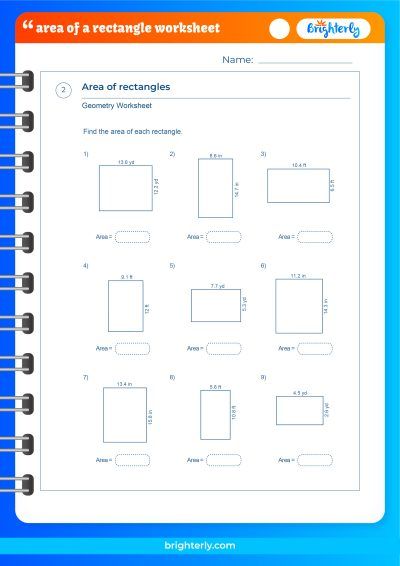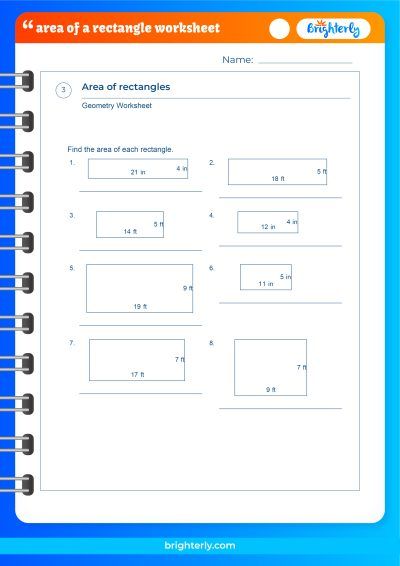Area of a Square – Definition, Formula, Examples
Created on Dec 28, 2023
Updated on January 5, 2024
At Brighterly, we believe in making math enjoyable and accessible for children of all ages. As a cornerstone of geometry, the area of a square is a fundamental concept that kids will encounter throughout their education. By understanding the area of a square, children can unlock their potential to solve more complex mathematical problems and explore the fascinating world of geometry.
In this article, we will delve into the intricacies of the area of a square, its formula, and various methods of calculating it. Our goal is to help children grasp these concepts in a fun and engaging manner, making them feel more confident in their math skills.
What is the Area of Square?
The area of a square is a fundamental concept in mathematics that is commonly taught to children as part of their basic geometry lessons. In simple terms, the area of a square refers to the amount of space enclosed within its four equal sides. It is a measure of the total region that a square covers, and it is expressed in square units. Understanding the concept of area is crucial for children, as it lays the foundation for more advanced mathematical concepts they will encounter in their education.
As a website dedicated to making math more accessible and engaging for children, Brighterly is here to provide an easy-to-understand guide on the area of a square, its formula, and various ways to calculate it. Let’s dive into the world of squares and explore how to find their area using different methods!
Area of Square Formula
The area of a square can be calculated using a straightforward formula. The formula for finding the area of a square is:
Area = Side × Side or Area = s²
In this formula, ‘Side’ or ‘s’ represents the length of one side of the square. Since all sides of a square are equal, multiplying the length of one side by itself will give you the area of the square. This formula is applicable to all squares, regardless of their size or the unit of measurement used.
How to Find the Area of a Square?
There are several ways to find the area of a square, depending on the information you have at hand. In this section, we will cover three methods for calculating the area of a square:
- Area of Square when the Perimeter of a Square is Given
- Area of Square When the Side of Square is Given
- Area of Square When the Diagonal of a Square is Given
To enhance your understanding of the concept of the Area of a Square, we suggest taking a look at the math worksheets provided by Brighterly. These worksheets are designed to help you learn and reinforce your knowledge on this topic.
Area of Square when the Perimeter of a Square is Given
The perimeter of a square is the total length of its four equal sides. If you know the perimeter of a square, you can find its area by first calculating the length of one side and then using the area formula. Here’s the step-by-step process:
- Divide the perimeter by 4 to find the length of one side: Side = Perimeter ÷ 4
- Use the area formula to find the area: Area = Side × Side or Area = s²
Area of Square When the Side of Square is Given
If you know the length of one side of the square, finding its area is straightforward. Simply use the area formula mentioned earlier:
Area = Side × Side or Area = s²
Area of Square When the Diagonal of a Square is Given
The diagonal of a square is the line segment that connects two opposite corners. If you know the length of the diagonal, you can find the area of the square using the following steps:
- Divide the diagonal by √2 to find the length of one side: Side = Diagonal ÷ √2
- Use the area formula to find the area: Area = Side × Side or Area = s²
Area of a Square Sample Problems
Let’s look at some sample problems to help you better understand the different methods of finding the area of a square:
Perimeter given: A square has a perimeter of 20 units. What is its area?
- Side = Perimeter ÷ 4 => Side = 20 ÷ 4 => Side = 5
- Area = Side × Side => Area = 5 × 5 => Area = 25 square units
Side given: A square has a side length of 6 units. What is its area?
- Area = Side × Side => Area = 6 × 6 => Area = 36 square units
Diagonal given: A square has a diagonal length of 10 units. What is its area?
- Side = Diagonal ÷ √2 => Side = 10 ÷ √2 => Side ≈ 7.07
- Area = Side × Side => Area ≈ 7.07 × 7.07 => Area ≈ 50 square units
Practice Problems
Now that you understand the different methods of finding the area of a square, try solving these practice problems on your own:
-
- A square has a perimeter of 32 units. What is its area?
- A square has a side length of 9 units. What is its area?
- A square has a diagonal length of 14 units. What is its area?
Conclusion
We at Brighterly are committed to providing comprehensive, easy-to-understand, and enjoyable learning resources for children. Our guide on the area of a square is designed to help young learners grasp this essential concept in geometry and build a strong foundation for future mathematical success.
As your child masters the area of a square, they will develop problem-solving skills and the ability to tackle more challenging geometric concepts. Remember, practice makes perfect! Encourage your child to apply these methods to different situations and problems, and soon they’ll be a pro at finding the area of a square.
At Brighterly, we strive to make math an exciting and rewarding journey for children. Keep exploring our other resources and articles to support your child’s mathematical growth and development. Together, we can make learning fun and fulfilling!
Frequently Asked Questions on Area of Square
What is the difference between the area and the perimeter of a square?
The area of a square is the amount of space enclosed within its four equal sides, while the perimeter is the total length of those four sides. Area is measured in square units, while the perimeter is measured in linear units.
Can the area of a square be negative?
No, the area of a square cannot be negative. The area is a measure of the space enclosed by the square and must always be a positive value.
Is the formula for the area of a square the same for all squares?
Yes, the formula for the area of a square (Area = Side × Side or Area = s²) is the same for all squares, regardless of their size or the unit of measurement used.
Information Sources
This article was created using information from the following sources:






